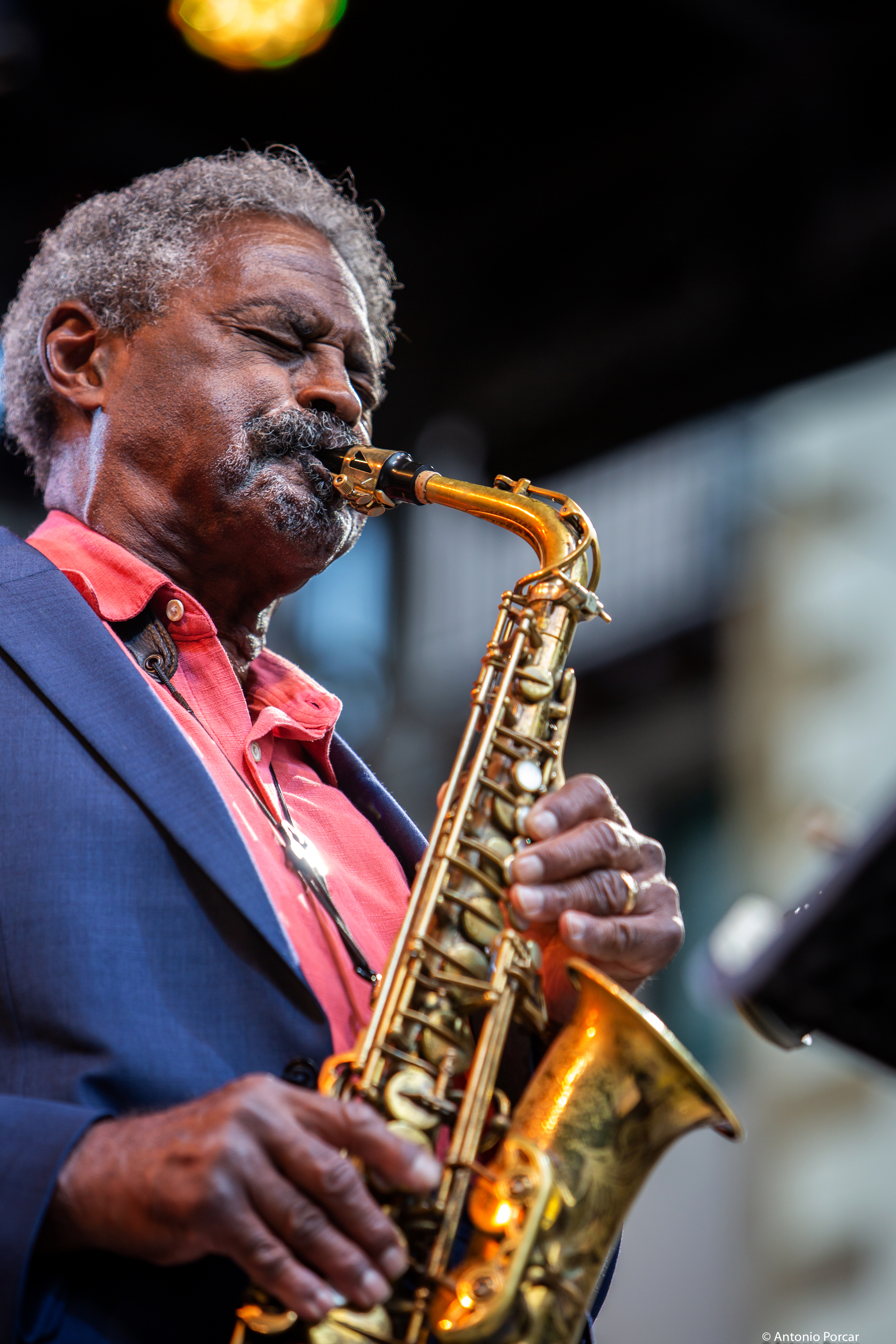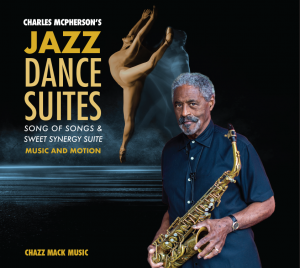Delight – Charles McPherson
A mellow, bebop-ish medium swinger with a countermelody that weaves around the melody. Like several other Charles McPherson songs, this one has rhythm section figures throughout the head; piano and bass parts are available.
- Recording: Charles McPherson - Jazz Dance Suites
- Recorded on: December 9, 2019
- Label: Chazz Mack Music ()
- Concert Key: E-flat
- Vocal Range: , to
- Style: Swing (medium)
- Trumpet - Terell Stafford
- Alto Sax - Charles McPherson
- Piano - Jeb Patton
- Bass - David Wong
- Drums - Billy Drummond
- Description
- Historical Notes
- Solos
- Piano Corner
- Bass Corner
- Drum Corner
- Guitar Corner
- Inside & Beyond
- Minus You
A charming medium swinger on the mellow, lyrical side of bebop. It’s a 32-measure AABC song; the C section is a variation of the A section. The melody develops a simple rising three-note phrase that outlines a major 6th chord (E♭, G, C)—the “pretty” chord common in medium-tempo and slower bebop songs. The bridge develops the same melodic theme in the key of G♭. The A section changes are mostly diatonic (sort of like a simplified “rhythm changes” that doesn’t go to the IV). In the bridge, some chromatic passing chords appear in G♭, such as D7 in the third measure leading to D♭7. The C section adds more passing chords in E♭, with a descending bass line in the first four measures.
This song has a countermelody that weaves around the melody, sometimes answering and filling in around the melody phrases and at other times harmonizing below the melody. In a few places, the two lines are in unison. On the recording, the alto sax has the melody on the A and C sections with the trumpet on the countermelody; they switch at B. This is reflected in our first and second parts.
There are rhythm section figures throughout the head; piano and bass parts are available. Our piano part also shows the second horn part as a cue; pianists can also play this part in a quartet setting with a horn player on the first part. Articulation and phrasing are very important in this and many other Charles McPherson compositions. In this song, the piano chords on the first and second measures (and several other places) should be played smoothly with no rest in between; as the second and third measures are anticipated by an eighth note, we have notated this as alternating double-dotted half notes and eighth notes tied to the next double-dotted half note.
Our piano and bass parts show Charles’ original intro, which is not played on the recording; it consists of eight measures of piano solo over a bass ostinato with an E/B♭ tonality. On the recording, the intro is six measures of pedaling on B♭7sus. The C section melody is also slightly different on the recording from the way it’s written; for example, the note on beat 2 of the last measure is D on the recording instead of E♭. E♭ is played here on the out C section.
Because this arrangement is in a specific range with the first and second parts in relatively close intervals, our C bass clef first and second parts only work specifically with each other in a quintet setting with two trombones or other bass clef instruments. These parts are written an octave below the others.
This song has a countermelody that weaves around the melody, sometimes answering and filling in around the melody phrases and at other times harmonizing below the melody. In a few places, the two lines are in unison. On the recording, the alto sax has the melody on the A and C sections with the trumpet on the countermelody; they switch at B. This is reflected in our first and second parts.
There are rhythm section figures throughout the head; piano and bass parts are available. Our piano part also shows the second horn part as a cue; pianists can also play this part in a quartet setting with a horn player on the first part. Articulation and phrasing are very important in this and many other Charles McPherson compositions. In this song, the piano chords on the first and second measures (and several other places) should be played smoothly with no rest in between; as the second and third measures are anticipated by an eighth note, we have notated this as alternating double-dotted half notes and eighth notes tied to the next double-dotted half note.
Our piano and bass parts show Charles’ original intro, which is not played on the recording; it consists of eight measures of piano solo over a bass ostinato with an E/B♭ tonality. On the recording, the intro is six measures of pedaling on B♭7sus. The C section melody is also slightly different on the recording from the way it’s written; for example, the note on beat 2 of the last measure is D on the recording instead of E♭. E♭ is played here on the out C section.
Because this arrangement is in a specific range with the first and second parts in relatively close intervals, our C bass clef first and second parts only work specifically with each other in a quintet setting with two trombones or other bass clef instruments. These parts are written an octave below the others.
Delight is the second movement of Sweet Synergy Suite, originally written for the San Diego Ballet. This song shows a distinct Charlie Parker influence: with its two-part counterpoint and the melody’s focus on the “pretty notes,” the 6th and 9th, it recalls Parker’s two contrapuntal rhythm changes heads, Ah-Leu-Cha and Chasin’ The Bird.
For more from this album, check out Thinking Of You and The Gospel Truth, two movements of Charles' Song Of Songs suite.
For more from this album, check out Thinking Of You and The Gospel Truth, two movements of Charles' Song Of Songs suite.
Related Songs
Email Send Delight to a friend
Send this page to a friend via email. Add your name or email in the first field. In the second, add one or more email addresses, separated by a comma.

Charles McPherson
born on July 24, 1939
Charles McPherson's new CD, "Jazz Dance Suites" is available. A product of his love and admiration for his daughter Camille, Charles wrote two suites of new music for the CD. Read more...
There was a problem.
...



